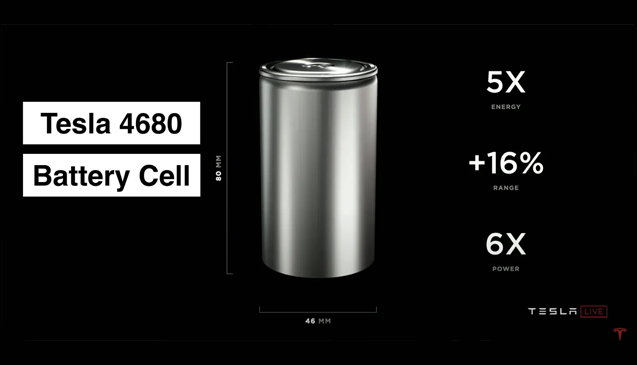Tesla has been a trailblazer in the electric vehicle (EV) industry, not only by producing sleek and high-performance cars but also by constantly pushing the boundaries of battery technology. In a market where battery efficiency is critical, Tesla’s commitment to innovation has set the stage for groundbreaking advancements. Battery technology is the heart of electric vehicles, and Tesla’s efforts to develop new technologies are aimed at increasing energy density, reducing costs, and enhancing overall performance. The latest innovations, including Tesla’s new 4680 battery cell, promise to revolutionize both their vehicle lineup and the entire EV industry.
Background of Tesla’s Battery Technology
Since its inception, Tesla has focused on improving battery technology as a core strategy for its business model. The company’s goal has always been to create sustainable energy solutions, which is impossible without breakthroughs in batteries. One of Tesla’s earlier achievements was its partnership with Panasonic to produce lithium-ion batteries, laying the groundwork for the future of EV technology.
A significant milestone in Tesla’s journey came with the announcement of the 4680 battery cell, first revealed during Tesla’s Battery Day in 2020. This moment marked a turning point in battery innovation, with promises of higher energy density, improved efficiency, and lower costs. Tesla’s Battery Day also highlighted the importance of new manufacturing processes that would simplify production while significantly boosting the performance of Tesla’s EVs.
The 4680 Battery Cell
The 4680 battery cell is Tesla’s latest and most ambitious battery technology to date. The name 4680 refers to the dimensions of the cell, which measures 46 mm in diameter and 80 mm in height. This larger form factor enables the battery to store more energy and deliver it more efficiently. Tesla’s new cell design also incorporates tabless technology, which eliminates the need for a tab in the battery, improving thermal management and reducing manufacturing complexity.
Several key benefits arise from this new cell design:
- Cost reduction: The simplified production process allows Tesla to lower the cost per kilowatt-hour, making their cars more affordable.
- Increased energy density: The larger size of the 4680 cell stores more energy, allowing for extended vehicle ranges.
- Structural benefits: These cells contribute to a more rigid and stable vehicle structure, improving the overall performance and safety of Tesla’s EVs.
Currently, the 4680 battery cell is being produced at Gigafactory Texas, and Tesla plans to scale production globally. This new battery is expected to power Tesla’s upcoming models, including the Cybertruck and the Tesla Semi.
Recent Developments
Tesla recently achieved a major milestone in battery production with the manufacturing of its 100 millionth 4680 battery cell. This achievement not only highlights Tesla’s manufacturing capabilities but also underscores the scalability of the 4680 technology. Gigafactory Texas plays a crucial role in this production ramp-up, with plans to further accelerate output in the coming years.

Another notable development is the introduction of the second-generation tabless cell. This new version offers further improvements in efficiency and energy output, which could extend vehicle ranges even further while simultaneously lowering costs. As Tesla continues to innovate, it is also exploring new battery chemistries and materials to enhance performance.
Technological Innovations
One of the most exciting aspects of Tesla’s battery evolution is its ongoing work with battery chemistry. The company is actively working on lithium-iron-phosphate (LFP) chemistry for its standard-range vehicles. LFP batteries are known for being more cost-effective and durable, though they typically offer lower energy density compared to traditional lithium-ion batteries. However, Tesla’s continuous advancements have allowed them to overcome many of these limitations, making LFP batteries a strong contender for future EV applications.
Another innovation in the pipeline is the development of a proprietary honeycomb material that enhances energy density while maintaining structural integrity. This material has the potential to dramatically improve the energy-to-weight ratio, offering even greater range for Tesla’s vehicles.
Furthermore, there is ongoing research into wireless charging technology, which could provide a seamless and convenient way for EV owners to charge their vehicles without the need for cables or charging stations. Though still in its experimental phase, wireless charging could revolutionize the EV charging experience and further boost adoption.
Impact on Tesla’s EVs
Tesla’s new battery technology is set to dramatically enhance the performance of its electric vehicles. With the 4680 cells, Tesla cars will see significant improvements in driving range and charging times. The increased energy density of these cells means that vehicles can travel further on a single charge, making them more appealing to a wider audience. Moreover, the new cells are expected to reduce the cost per vehicle, which could allow Tesla to price its cars more competitively, helping to accelerate the mass adoption of electric vehicles.
In addition to these consumer benefits, the environmental impact of Tesla’s new batteries is notable. By reducing the amount of raw materials needed per battery and improving the efficiency of the production process, Tesla is aligning its innovation with broader sustainability goals. The company is also focused on ensuring that its supply chain for key materials like nickel and lithium is ethical and sustainable.
Industry Implications
Tesla’s advances in battery technology are reshaping the electric vehicle market. As a leader in the industry, Tesla’s innovations often set trends that other automakers follow. Competitors like Rivian, Lucid Motors, and traditional automakers such as Volkswagen and Ford are closely watching Tesla’s progress, and many are investing heavily in their own battery technologies to remain competitive.
These advancements are likely to trigger a new wave of battery research and development across the industry, pushing the boundaries of what electric vehicles are capable of. The development of more efficient, cheaper, and sustainable batteries is crucial for the broader adoption of electric vehicles, and Tesla is at the forefront of this movement.
Challenges and Future Prospects
While Tesla’s progress in battery technology is impressive, there are still several challenges to overcome. Scaling production of the 4680 battery cell to meet the global demand for electric vehicles is a complex task, requiring substantial investment and coordination across Tesla’s factories. Additionally, the company is working to improve the supply chain for critical materials, such as lithium and cobalt, to avoid bottlenecks in production.
Looking to the future, Tesla has ambitious goals for its battery technology. CEO Elon Musk has set a target to produce a $25,000 electric vehicle by leveraging the cost reductions made possible by the 4680 battery cell. If Tesla can achieve this, it would make electric vehicles more accessible to the masses, further accelerating the transition to sustainable energy.
Tesla’s innovations are also expected to have a profound impact on global EV adoption. As battery technology improves, electric vehicles will become a more viable option for consumers around the world, leading to a reduction in global carbon emissions and a significant step toward combating climate change.
Conclusion
Tesla’s ongoing advancements in battery technology are reshaping the future of the electric vehicle industry. From the groundbreaking 4680 battery cell to cutting-edge innovations in battery chemistry and production techniques, Tesla is leading the charge toward a more sustainable future. The company’s commitment to reducing costs, increasing energy density, and improving manufacturing processes is setting new standards for what electric vehicles can achieve.
As Tesla continues to innovate, its influence on the EV market will only grow. The company’s achievements in battery technology are not just important for its own success but also for the broader adoption of electric vehicles and the global push toward sustainable energy solutions. With every new breakthrough, Tesla is helping to shape the future of transportation.




